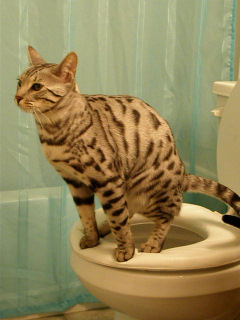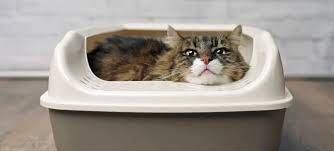When Flushing Animal Waste Down the Toilet Should be Harmful
When Flushing Animal Waste Down the Toilet Should be Harmful
Blog Article
What are your thoughts concerning Don't Flush Your Pets Poo Down The Loo, Vet Warns?

When it pertains to getting rid of waste, specifically animal waste, many individuals frequently resort to the hassle-free alternative of flushing it down the bathroom. However, this seemingly very easy remedy can have serious effects for the setting and public health. In this short article, we'll check out why flushing animal waste down the toilet is a bad idea and give alternative techniques for proper disposal.
Introduction
Correct waste disposal is essential for preserving environmental sustainability and public health. While it might seem safe to flush animal waste down the toilet, it can bring about different issues, both for the setting and human wellness.
Threats of flushing pet waste
Environmental influence
Flushing pet waste presents damaging microorganisms and virus into waterways, which can adversely influence marine ecosystems. These microorganisms can pollute water resources and injury marine life, interrupting fragile communities.
Public health problems
Animal waste contains unsafe germs such as E. coli and Salmonella, which can pose major wellness threats to people. Purging animal waste down the bathroom can contaminate water products, bring about the spread of conditions and infections.
Alternatives to flushing
As opposed to flushing pet waste down the commode, there are numerous different disposal approaches that are more eco-friendly and hygienic.
Composting
Composting animal waste is an environmentally friendly method to take care of it. By composting, raw material is broken down right into nutrient-rich dirt, which can be utilized to fertilize yards and plants.
Garbage dump disposal
Taking care of pet waste in a garbage dump is another alternative. While not as eco-friendly as composting, it is a safer choice to flushing, as it stops the contamination of water sources.
Family pet waste disposal systems
There are customized animal waste disposal systems readily available that safely and hygienically take care of animal waste. These systems usually utilize enzymes to break down waste and remove odors.
Steps to proper pet waste disposal
To guarantee correct disposal of animal waste, comply with these steps:
Scooping and nabbing waste
Regularly scoop and bag animal waste using eco-friendly bags. This avoids waste from polluting the atmosphere.
Making use of marked waste containers
Dispose of bagged pet waste in marked waste containers, such as compost containers or land fill containers. Stay clear of flushing it down the commode in any way prices.
Cleaning up can and animal locations frequently
Consistently tidy can and pet dog locations to avoid the accumulation of waste and bacteria. Use pet-safe cleaning items to maintain health.
Advantages of appropriate disposal methods
Taking on appropriate disposal methods for pet waste offers a number of benefits:
Reduced environmental pollution
Appropriate disposal approaches reduce the danger of environmental pollution, shielding rivers and ecosystems from contamination
Lessened threat of water contamination.
By staying clear of flushing pet waste down the bathroom, the danger of water contamination is dramatically lowered, safeguarding public health.
Improved sanitation and hygiene
Proper disposal methods advertise far better hygiene and health, producing a more secure setting for both people and animals.
Conclusion
Finally, purging animal waste down the toilet is hazardous to the setting and public health. By taking on alternate disposal methods and adhering to correct waste administration practices, we can decrease the unfavorable get more info impact of pet waste and contribute to a cleaner, much healthier planet.
Why You Should Never Flush Cat Poop Down the Toilet
A rose by any other name might smell as sweet, but not all poop is created equal. Toilets, and our sewage systems, are designed for human excrement, not animal waste. It might seem like it couldn’t hurt to toss cat feces into the loo, but it’s not a good idea to flush cat poop in the toilet.
First and foremost, assuming your cat uses a litter box, any waste is going to have litter on it. And even the smallest amount of litter can wreak havoc on plumbing.
Over time, small amounts build up, filling up your septic system. Most litter sold today is clumping; it is made from a type of clay that hardens when it gets wet. Ever tried to scrape old clumps from the bottom of a litter box? You know just how cement-hard it can get!
Now imagine just a small clump of that stuck in your pipes. A simple de-clogger like Drano isn’t going to cut it. And that means it’s going to cost you big time to fix it.
For an amusing, graphic tale of what happens when you flush too much litter down the toilet all at once, take a few minutes to read Gene Weingarten’s 2017 Washington Post column “So that’s what happens when you flush cat litter down the toilet.”
Parasitic Contamination
Believe it or not, your healthy kitty may be harboring a nasty parasite. Only cats excrete Toxoplasma in their feces. Yet it rarely causes serious health issues in the cats that are infected. Most people will be fine too if infected. Only pregnant women and people with compromised immune systems are at risk. (If you’ve ever heard how women who are expecting are excused from litter cleaning duty, Toxoplasma is why.)
But other animals may have a problem if infected with the parasite. And human water treatment systems aren’t designed to handle it. As a result, the systems don’t remove the parasite before discharging wastewater into local waterways. Fish, shellfish, and other marine life — otters in particular — are susceptible to toxoplasma. If exposed, most will end up with brain damage and many will die.
Depending on the species of fish, they may end up on someone’s fish hook and, ultimately on someone’s dinner plate. If that someone has a chronic illness, they’re at risk.
Skip the Toilet Training
We know there are folks out there who like to toilet train their cats. And we give them props, it takes a lot of work. But thanks to the toxoplasma, it’s not a good idea.
Leave the toilet to the humans, and accept your future litter cleaning duty.

Consistently tidy can and pet dog locations to avoid the accumulation of waste and bacteria. Use pet-safe cleaning items to maintain health.
Advantages of appropriate disposal methods
Taking on appropriate disposal methods for pet waste offers a number of benefits:
Reduced environmental pollution
Appropriate disposal approaches reduce the danger of environmental pollution, shielding rivers and ecosystems from contamination
Lessened threat of water contamination.
By staying clear of flushing pet waste down the bathroom, the danger of water contamination is dramatically lowered, safeguarding public health.
Improved sanitation and hygiene
Proper disposal methods advertise far better hygiene and health, producing a more secure setting for both people and animals.
Conclusion
Finally, purging animal waste down the toilet is hazardous to the setting and public health. By taking on alternate disposal methods and adhering to correct waste administration practices, we can decrease the unfavorable get more info impact of pet waste and contribute to a cleaner, much healthier planet.
Why You Should Never Flush Cat Poop Down the Toilet
A rose by any other name might smell as sweet, but not all poop is created equal. Toilets, and our sewage systems, are designed for human excrement, not animal waste. It might seem like it couldn’t hurt to toss cat feces into the loo, but it’s not a good idea to flush cat poop in the toilet.
First and foremost, assuming your cat uses a litter box, any waste is going to have litter on it. And even the smallest amount of litter can wreak havoc on plumbing.
Over time, small amounts build up, filling up your septic system. Most litter sold today is clumping; it is made from a type of clay that hardens when it gets wet. Ever tried to scrape old clumps from the bottom of a litter box? You know just how cement-hard it can get!
Now imagine just a small clump of that stuck in your pipes. A simple de-clogger like Drano isn’t going to cut it. And that means it’s going to cost you big time to fix it.
For an amusing, graphic tale of what happens when you flush too much litter down the toilet all at once, take a few minutes to read Gene Weingarten’s 2017 Washington Post column “So that’s what happens when you flush cat litter down the toilet.”
Parasitic Contamination
Believe it or not, your healthy kitty may be harboring a nasty parasite. Only cats excrete Toxoplasma in their feces. Yet it rarely causes serious health issues in the cats that are infected. Most people will be fine too if infected. Only pregnant women and people with compromised immune systems are at risk. (If you’ve ever heard how women who are expecting are excused from litter cleaning duty, Toxoplasma is why.)
But other animals may have a problem if infected with the parasite. And human water treatment systems aren’t designed to handle it. As a result, the systems don’t remove the parasite before discharging wastewater into local waterways. Fish, shellfish, and other marine life — otters in particular — are susceptible to toxoplasma. If exposed, most will end up with brain damage and many will die.
Depending on the species of fish, they may end up on someone’s fish hook and, ultimately on someone’s dinner plate. If that someone has a chronic illness, they’re at risk.
Skip the Toilet Training
We know there are folks out there who like to toilet train their cats. And we give them props, it takes a lot of work. But thanks to the toxoplasma, it’s not a good idea.
Leave the toilet to the humans, and accept your future litter cleaning duty.
Hopefully you liked our post on Why you should never flush dog poop down the toilet. Thanks a ton for finding the time to read our blog. For those who enjoyed reading our blog posting plz be sure to share it. Bless you for being here. Kindly check our site back soon.
Call Report this page